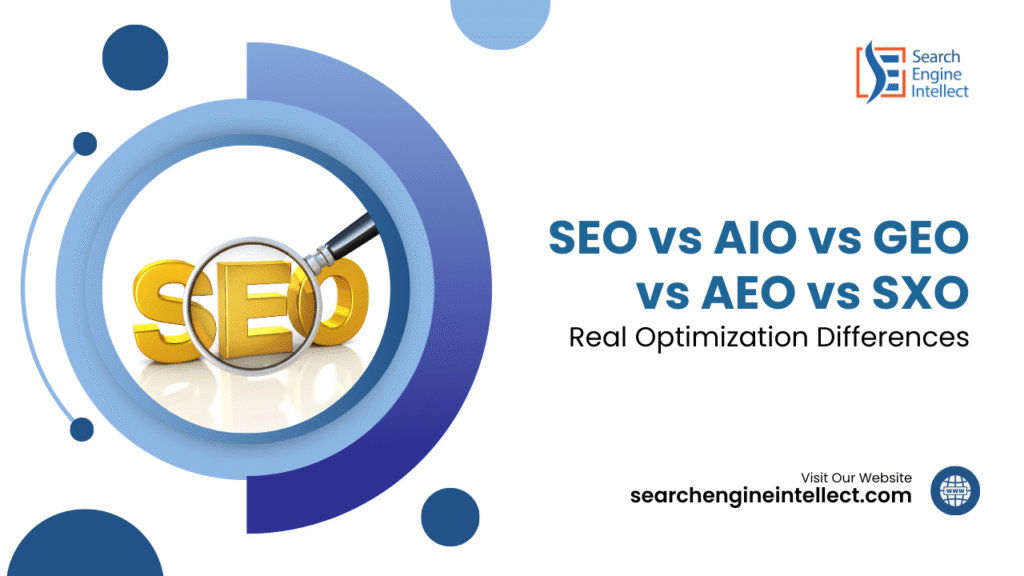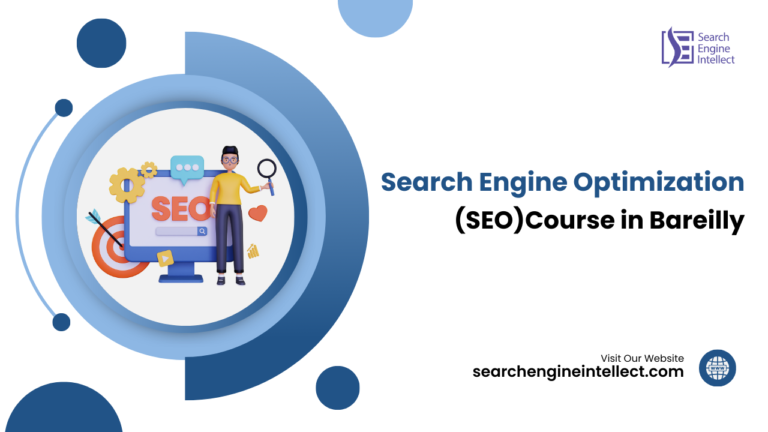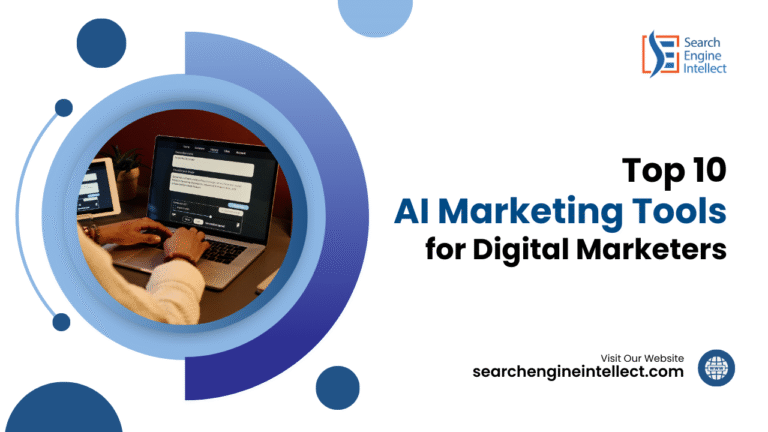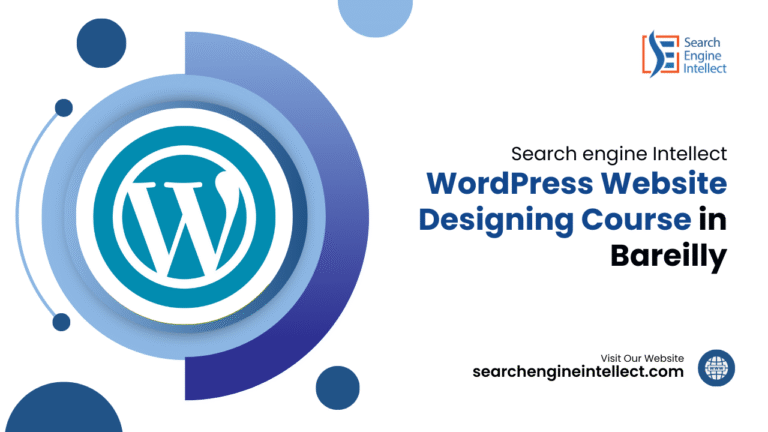SEO, AIO, GEO, AEO, SXO: What’s the Real Difference?
Table of Contents
Book a Free Demo Class

In 2025, the world of search optimization has evolved far beyond traditional SEO. Simply stuffing keywords or building backlinks is no longer enough. With the rise of AI-driven search engines and answer platforms, digital marketers need to understand how different strategies like SEO, AIO, GEO, and AEO work—and how they impact visibility, traffic, and leads.
Each approach serves a unique purpose: SEO focuses on ranking in traditional search results, AIO ensures AI systems understand your content, GEO targets AI-generated responses, and AEO optimizes for direct answers to user queries. Understanding these differences is critical if you want to stay ahead, improve rankings, and generate more leads in today’s competitive online landscape.
In this article, we’ll break down each strategy, compare them side by side, and show how you can integrate them for maximum impact.

What Is SEO? (Search Engine Optimization)
SEO, or Search Engine Optimization, is the process of improving a website’s visibility in search engine results pages (SERPs) like Google, Bing, or Yahoo. The goal is to attract organic (non-paid) traffic by making your content easier for search engines to understand and rank.

Why SEO Matters:
SEO is the foundation of digital marketing. Even with advanced AI-driven search results and new strategies like AIO, GEO, or AEO, traditional SEO still drives the majority of web traffic. Without it, your content might never reach your target audience, no matter how valuable it is.
Key Components of SEO:
- Keyword Research:
- Finding and targeting the phrases your audience actually searches for.
- Tools: Google Keyword Planner, Ahrefs, SEMrush.
- On-Page SEO:
- Optimizing page titles, headings, meta descriptions, URLs, and content structure.
- Ensuring content is clear, readable, and aligns with user intent.
- Off-Page SEO:
- Building authority through backlinks from high-quality websites.
- Social signals and online reputation management also play a role.
- Technical SEO:
- Ensure your website is mobile-friendly and fast-loading.
- Implement structured data and schema markup.
What Is AIO? (Artificial Intelligence Optimization)
Artificial Intelligence Optimization (AIO) is the process of optimizing content, websites, and digital assets to ensure they are effectively understood, indexed, and recommended by AI-driven systems like ChatGPT, Jasper, Copy.ai, Perplexity, Google’s AI features, and other machine learning models. Unlike traditional SEO, which focuses mainly on ranking in search engine results, AIO focuses on making your content AI-friendly.

Why AIO Matters
- AI-driven search results are becoming dominant, especially in voice search, AI chatbots, and featured snippets.
- Websites optimized for AI are more likely to appear in answer engines, enhancing visibility beyond traditional SERPs.
- Integrating AIO with traditional SEO can boost traffic, engagement, and lead generation.
Also Read: Artificial Intelligence Optimization
Key Components of AIO
- Structured Data & Schema Markup
- Using schema.org markup helps AI understand the context of your content.
- Helps AI understand the meaning and context of your content (e.g., product info, articles, FAQs).
- Makes content eligible for AI-generated answer boxes.
- Natural Language Processing (NLP) Alignment
- Ensures your content matches the way people ask questions.
- Include clear intent keywords, semantically related terms, and well-structured sentences.
- Content Context & Relevance
- AIO prioritizes content that is accurate, updated, and comprehensive.
- Avoid low-quality or keyword-stuffed content; AI can detect it.
- Token Efficiency & Embedding Relevance
- AI uses tokenized content to process text.
- Avoid fluff and redundant text; focus on concise, meaningful information.
- Semantic Linking
- Content should be easy for AI to summarize and for users to read.
- Example: Linking to authoritative sources (Wikipedia, research papers) and your related pages.
What Is GEO (Generative Engine Optimization)?
This concept is relatively new, but it is becoming increasingly relevant as AI tools such as ChatGPT, Google Gemini, and other generative AI platforms gain popularity.
GEO stands for Generative Engine Optimization, and it focuses on providing information that AI tools can understand, refer to, or even cite in their responses.
For example, if someone asks ChatGPT a question and your blog article is mentioned in the response, that’s a sign of good GEO.

Why GEO Matters
- Integrating GEO with traditional SEO ensures both search engine and AI visibility.
- AI-generated content and voice assistants are increasingly replacing traditional search clicks.
- GEO helps your brand or website get cited in AI responses, increasing visibility and credibility.
Key Components of GEO
- AI-Friendly Metadata: Using structured metadata and schema that AI systems can easily interpret.
- Content Formatting: Clear headings, lists, and concise paragraphs to make information digestible for AI.
- Contextual Relevance: Ensuring the content fully answers likely AI user queries.
- Generative-Specific Signals: Using AI-readable cues like
llms.txtor specific prompts to help generative models find your content.
What Is AEO? (Answer Engine Optimization)
AEO is all about making your content easy for search engines and AI systems to pull as a direct answer to a user’s question. Instead of just ranking your page somewhere on Google, AEO helps your content show up as a featured snippet, answer box, or AI-generated answer.
- Focuses on answering questions clearly and quickly.
- Uses short, concise sentences that AI can easily understand.
- Matches the user’s intent—what they really want to know.
- Includes structured content like lists, tables, or bullet points.
- Helps your website get featured in search results or AI responses, not just the 10 blue links.
AEO helps businesses capture featured snippet positions and dominate answer-based search results that provide immediate value to users.
What is SXO? (Search Experience Optimization)
SXO combines search engine optimization (SEO) with user experience (UX) principles to ensure that users not only find your website but also have a smooth, engaging, and conversion-friendly experience.
Why SXO Matters
- It bridges the gap between visibility (SEO) and conversion (UX).
- Google increasingly values user satisfaction signals, such as dwell time, click-through rate (CTR), and bounce rate.
- SXO ensures that your website not only ranks but also converts visitors into leads or customers.
Key Components of SXO
- Page Speed & Performance
- Fast-loading pages reduce bounce rates.
- Tools like Google PageSpeed Insights help optimize speed.
- Content Quality & Readability
- Clear, structured content that answers user intent.
- Use headings, bullet points, tables, and visuals to enhance readability.
- Mobile Optimization
- Mobile-first design is critical since most searches are on mobile.
- Responsive layouts and touch-friendly navigation are essential.
- User Engagement Metrics
- Time on page, pages per session, and low bounce rates indicate good user experience.
- Internal Linking & Navigation
- Logical, intuitive site structure helps users find what they need.
- Reduces frustration and improves dwell time.
- Call-to-Action (CTA) Optimization
- Strategically placed CTAs guide users toward conversions.
- Examples: “Contact us,” “Download Now,” or “Get a Free Quote.”
SXO transforms search traffic into measurable business results by optimizing every touchpoint in the user experience.
Comparative Analysis: SEO vs AIO vs GEO vs AEO vs SXO
| Strategy | Focus Area | Purpose | Key Techniques | Ideal For |
|---|---|---|---|---|
| SEO | Search Engine Rankings | Improve organic visibility in SERPs | Keyword research, backlinks, on-page/off-page SEO | Websites aiming for traditional traffic |
| AIO | AI Optimization | Make content understandable and retrievable by AI systems | Structured data, NLP, schema markup | AI-driven platforms, ChatGPT, Google AI |
| GEO | Generative Engine Optimization | Be featured in AI-generated content and responses | llms.txt, AI metadata, structured prompts | Brands targeting AI content platforms |
| AEO | Answer Engine Optimization | Provide concise, accurate answers to user queries | Conversational content, Q&A structure, fact-checking | Featured snippets, voice search results |
| SXO | Search Experience Optimization | Enhance overall user satisfaction and conversions | UX design, site speed, mobile optimization, content readability | Businesses focused on leads, conversions, and retention |
Integration Strategies for Maximum Impact
The Layered Approach
Successful digital marketing requires coordinated implementation across all optimization types:
- Foundation Layer (SEO): Establish basic visibility and authority
- Amplification Layer (AIO): Scale content reach through AI platforms
- Localization Layer (GEO): Target specific geographic markets
- Answer Layer (AEO): Capture direct answer opportunities
- Conversion Layer (SXO): Optimize user experience and results
Budget Allocation Framework
| Strategy | Recommended Budget % | Priority Level | Expected ROI Timeline |
|---|---|---|---|
| SEO | 40-50% | High | 3-6 months |
| SXO | 25-30% | High | 1-3 months |
| AEO | 15-20% | Medium | 2-4 months |
| AIO | 10-15% | Medium | 2-6 months |
| GEO | 5-15% | Variable | 1-3 months |
Common Implementation Mistakes
Strategy Isolation Issues
Many businesses fail to integrate these optimization approaches effectively:
- Treating strategies as independent initiatives
- Neglecting cross-strategy synergies
- Focusing on single metrics rather than holistic performance
- Underestimating resource requirements for proper implementation
Content Quality Compromises
The August 2025 Google spam update emphasizes authentic, user-focused content. Avoid these pitfalls:
- Over-relying on AI-generated content without human review
- Sacrificing quality for quantity in content production
- Ignoring E-E-A-T (Experience, Expertise, Authoritativeness, Trustworthiness) principles
- Failing to match genuine user search intent
Also read: Digital Marketing Strategy: How to Structure a Plan for 2025
Measurement and Optimization Framework
Key Performance Indicators by Strategy:
- SEO Metrics: Organic traffic growth, keyword ranking improvements, backlink quality scores
- AIO Metrics: AI platform citations, content scalability measures, automation efficiency
- GEO Metrics: Local search visibility, geographic traffic distribution, regional conversion rates
- AEO Metrics: Featured snippet captures, voice search appearances, direct answer traffic
- SXO Metrics: User engagement depth, conversion rate improvements, customer journey completion








